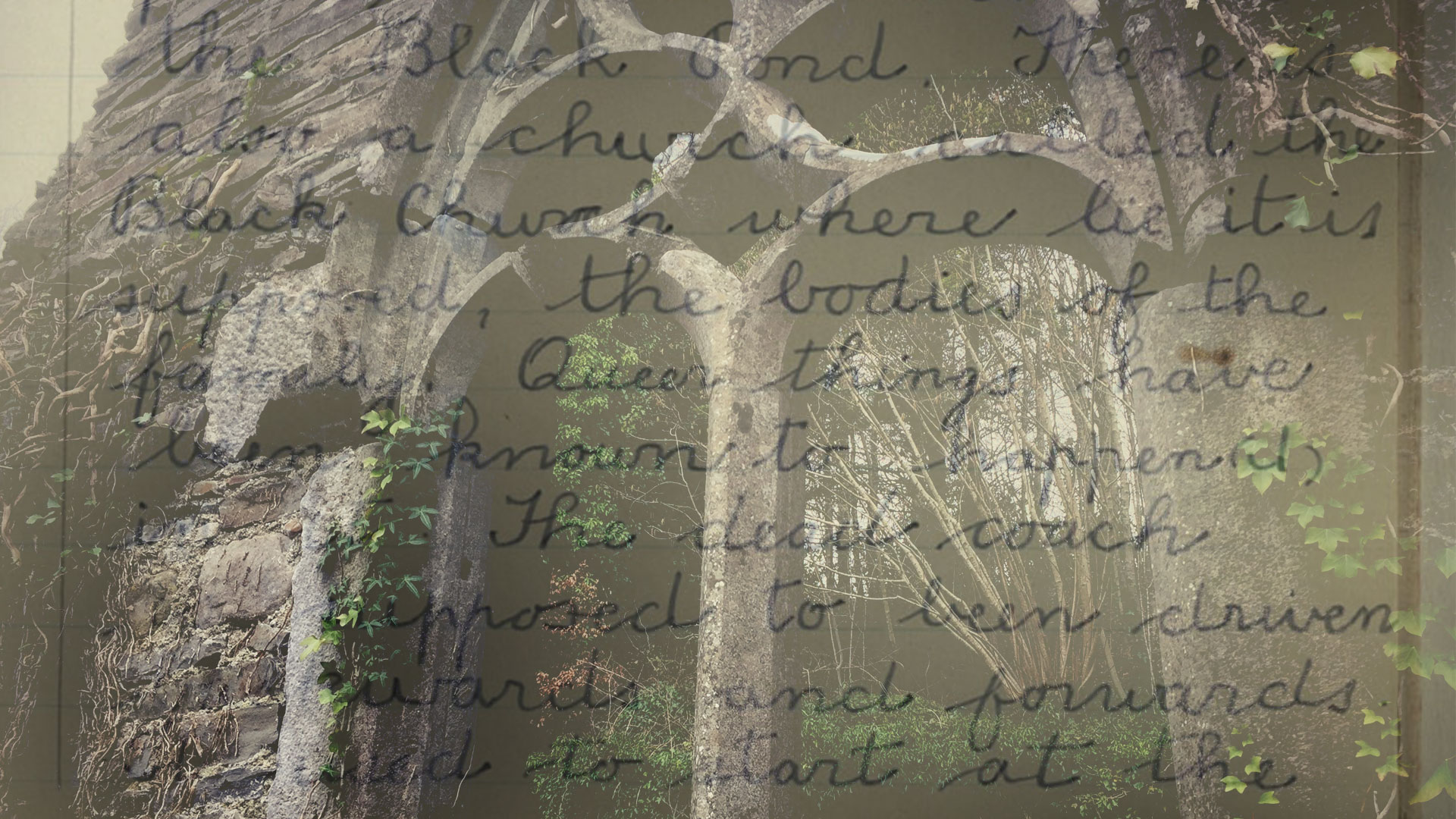The above piece is transcribed, directly from the school book. The estate was owned by the Trench family, the original house being designed by Michael Frederick Trench in 1773, possibly with the help of his friend, and renowned architect, James Gandon. The estate was inherited by the Domville family, in 1886, and was later inherited by the ‘Sir Hutchison Powe’ mentioned in the article, which is of course, Colonel William Hutchinson Poe. It was Poe who commissioned the leading architect of the day, Sir Edwin Lutyens, to design the gardens at Heywood. Work began in 1906, and Heywood Gardens were completed in 1912.
The “church called the Black Church” is the Trench family Mausoleum, which is situated in woodlands, close to the Masslough. Michael Frederick Trench, who died in 1791, and his wife Anna Helena, are buried there. Access to the tomb was gained by raising a four foot by four foot flagstone, and descending a flight of steps to the chamber.
The ‘Masklock pond’ mentioned, is what we know as the Masslough Lake, and no doubt the Black Pond, is what we refer to today, as Gills Pond.
Of the ominous ‘Dead Coach’ we know little, other than it was a tale of folklore, passed from father to son, in a time when such demonic stories were deemed far less dubious than they are today.
Thanks to Nicholas Delaney, from Bray, we know that the Dead Coach, pulled at pace by headless horses, is said to have galloped from the hall door of Heywood House, down by the Masslough Lake, through the village of Ballinakill, out the Coatch Road, and back into Heywood, through the main Entrance Gate, and disappear where it had originated, through the hall doors of the estate house.
